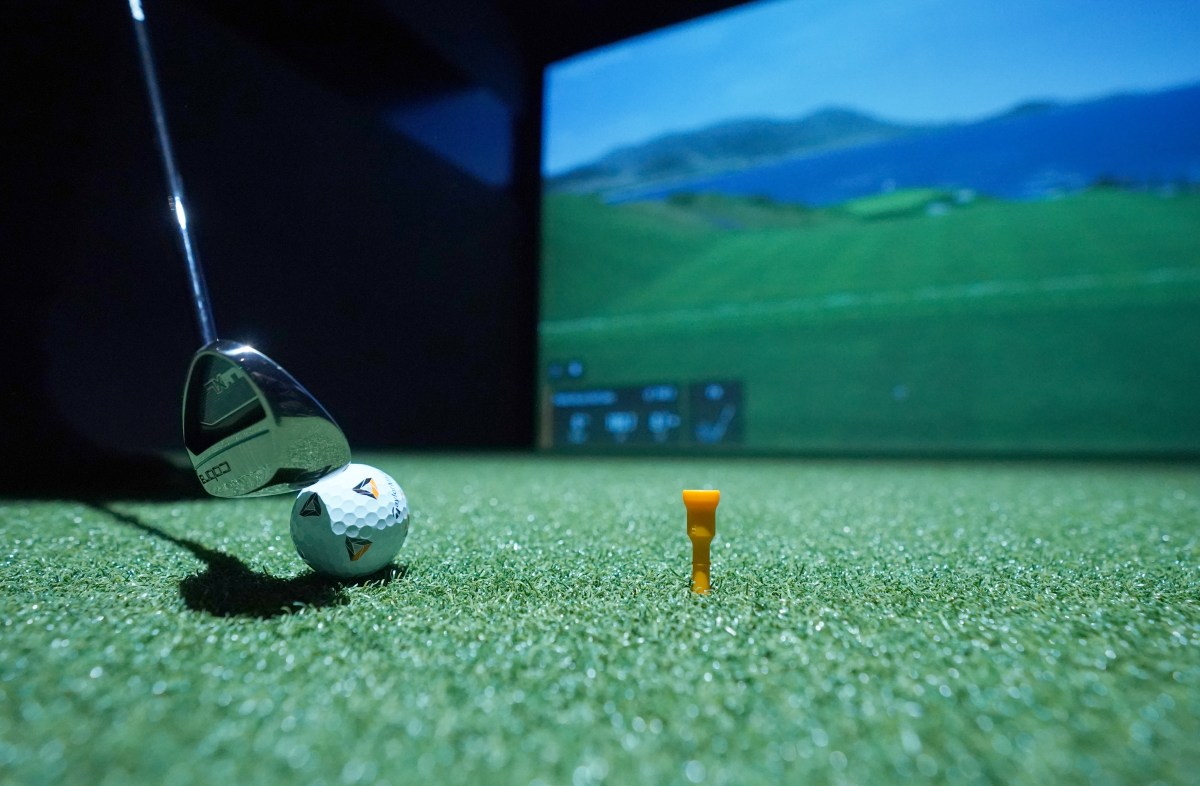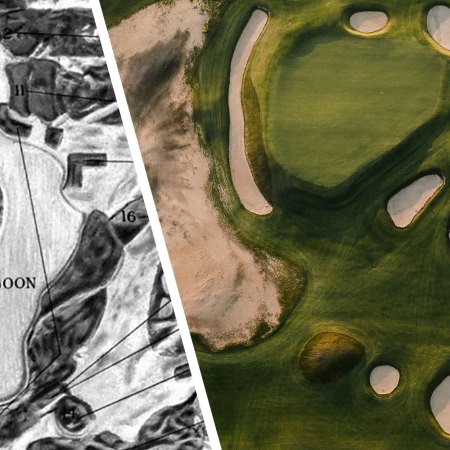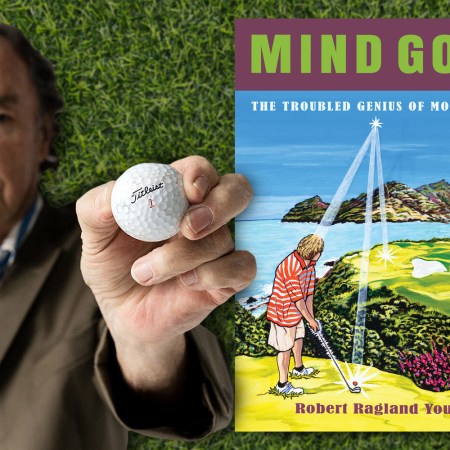The future of golf is indoors. That statement might have puzzled (if not outright rankled) many of the sport’s diehards a decade ago, but those in and around golf now know: launch monitors and simulator bays are changing the game, and they’re here to stay.
It’s now possible for a New England-based, 13-handicap to play Pebble Beach in the middle of winter…in his basement. Or for a “team” of golfers to receive Rory McIlroy-worthy TrackMan data while sipping beers in the middle of Midtown.
To some, indoor golf might seem like a dystopian Disney ride, at odds with the soul of the sport. But as the movement balloons to an estimated $3.3 billion market size by 2030, it will only get more realistic. Think: replications of grass cuts, conditions (humidity, temperature, wind) and eventually even the scents of specific courses.
Those touches are there for one overarching purpose: to help you improve your game. Simulators are popular because they’re fun, sure, but they’re mainly popular because they can make you a better golfer. The key rests in knowing how to best use them — and accurately discern what they’re trying to tell you. We spoke to simulator experts and casual golfers alike in order to wrap our heads around the dizzying indoor revolution.
Pro Golfers Are Bulking Up. Should Casual Players Do the Same?
Young, beefy stars have launched an “arms race” in the PGA. Is it working?The Simulator Revolution
For those who’ve never used a golf simulator before, it’s a little more advanced than Wii Sports Resort.
“Modern golf simulators have come a long way,” says Steph Mi, the host of Golf with Mi. “We’re not just swinging at pixelated screens anymore! Simulators use high-speed cameras and infrared radar to track ball speed, launch angle, spin and direction. They can recreate the ball’s flight with spooky accuracy.”
While those with the space and the coin (the machines can cost tens of thousands of dollars) have installed simulators in their homes, the vast majority of “indoor golfers” are heading to franchise facilities or members-only clubs. If you live in or near a city, search “golf simulator near me.” You might be surprised. (There’s one a block up the street from where I live in Williamsburg, called Wins’ Society.)
Big or small, these places typically have adjacent bars, TVs to watch whatever NFL or NBA game is on, and terraces to take a deep breath after a shank. Jake, a dentist living outside Boston, joined the rapidly expanding Five Iron Golf last winter. “I’d play different courses each day,” he says. “Like 45 minutes on the range and then 45 on a course I wanted to try. It’s a blast. The technology is extremely accurate.”
Kevin, a consultant based in New Jersey, even played in an indoor golf league this past spring. He’s similarly bullish on the simulator revolution. “It’s definitely a fun thing to do,” he says. “If you’re trying to improve your game you definitely can, especially if it has TrackMan capabilities. Gives you so much information that you can leverage to fix certain areas of your game.”
How to Use One to Get Better
How do you make sense of that information, though? If you’re sure you’re there for helpful statistics and slow-burn improvement — not just High Lifes and a chance to tee off at Augusta — what metrics should you prioritize and act upon?
According to Reid Colson, the golf simulator guru behind Yardstick Golf and r/golfsimulator (a Reddit forum boasting around 23,000 followers), golfers have historically used simulators “to optimize their driver setup and maximize their distance.” Club fitters watch you hit, then outfit you with the perfect shaft, club head and loft option. It’s a good system. And it’s one that can be methodically applied to your full 18-hole game.
“I’ve used the simulator at my golf course to adjust the club loft,” Colson says, “which gives me more distance and helps me hit the sweet spot of the club.” A related figure? Smash factor. “It helps you tell if you’re hitting the sweet spot. It’s ball speed divided by clubhead speed. A higher smash factor means that the club is transferring more energy to the ball…which results in a longer drive.”
There’s a veritable cornucopia of other stats available through golf simulators, from launch angle, to low point, to spin path, to spin axis. If it sounds nerdy, that’s because it is. It’s one thing to hit a ball hard against a wall for three hours, focusing on carry alone. That might sound like a good time. But it could also reinforce bad habits (or even bake them in, if you’re swinging the same way all offseason).
A bit of obsession, meanwhile, could help you overhaul your whole game — while relying on the same numbers the pros use. (Here’s Rory McIlroy posing with TrackMan stats a few years back. Tracking technology has a firm grasp on “outdoor golf” too now, with motion-capture monitors present at major events.)
12 Shots Per Club
Some of the golfers we spoke to noted that lane-switching between indoor and outdoor golf is a little trippy. They’re brimming with confidence, then they’re back in the elements…and back to the same old, same old.
Jake says all the extra shots indoors have yet to tangibly impact his final tally on a real course. “[There’s just] no way to replicate putting, or shots around the green, or hitting balls above and below your feet, which, for me, are the areas of golf that actually affect my scoring.” For his part, though, Colson credits a specific simulator strategy with helping him drop three points in his handicap, from a 7 to a 4.
“I used the simulator over a couple of different sessions to hit each of my clubs around 12 times, and recorded the distances. With that data, I create a printed/laminated cheat sheet that I could bring out on the course. I now had three accurate distances for each club (long, average and short carry yardages). I then used it for approach shots, in order to pick the right club. I would err towards the middle of the green. If the pin was in the back, I picked the club with a long carry that would not go over the back.”
Take a peak at Colson’s chart here. Notice that with the wedges he also tested 1/2 and 3/4 shots. It’s a pretty sound approach, no pun intended. He says the process helped him reset his expectations for his irons (in some cases, his perception of his club carry had been up to 15 yards off), and start eliminating three-putts. Not because his putting got better overnight — he just had easier shots to work with.
What’s on the Horizon?
Beyond its evolution into an indoor/outdoor sport, golf is changing on countless other fronts. Consider: Colson’s “cheat sheet” works best with a GPS watch or a laser rangefinder, both of which have become ubiquitous on the links; pro golfers are now spending more time in fitness studios than ever before; and McIlroy and Tiger Woods’s virtual concept TMRW Sports is building a “golf arena” in Florida.
Even putting is getting the off-course treatment, in the form of PuttView. “It’s a really cool new product that can change the undulation of the practice green and project an image onto the green showing you the line of the putt,” Colson says. “It’s helping folks learn how to read putts and diagnose why they missed a putt.”
This pace of change will likely prove too quick for some. Is something lost, some will surely ponder, as pros and amateurs alike make off-court tech a crucial cog in their practice regimen? Maybe. But remember: for the eager, yet ever-rusty amateur, the old, “natural” ways sure led to a lot of lost balls.
The Charge will help you move better, think clearer and stay in the game longer. Subscribe to our wellness newsletter today.

























